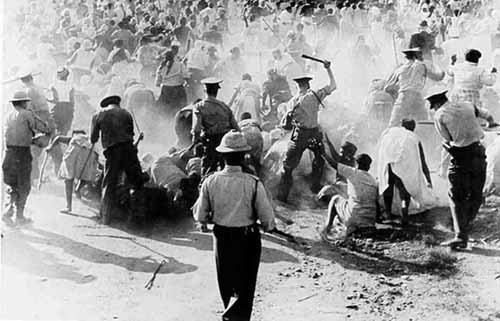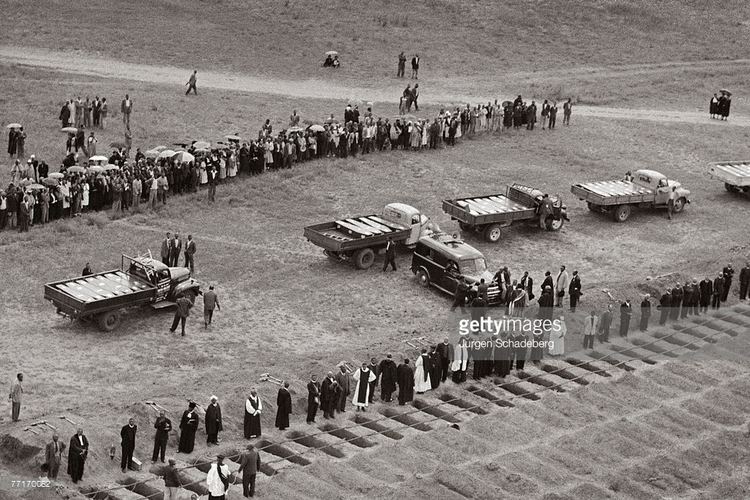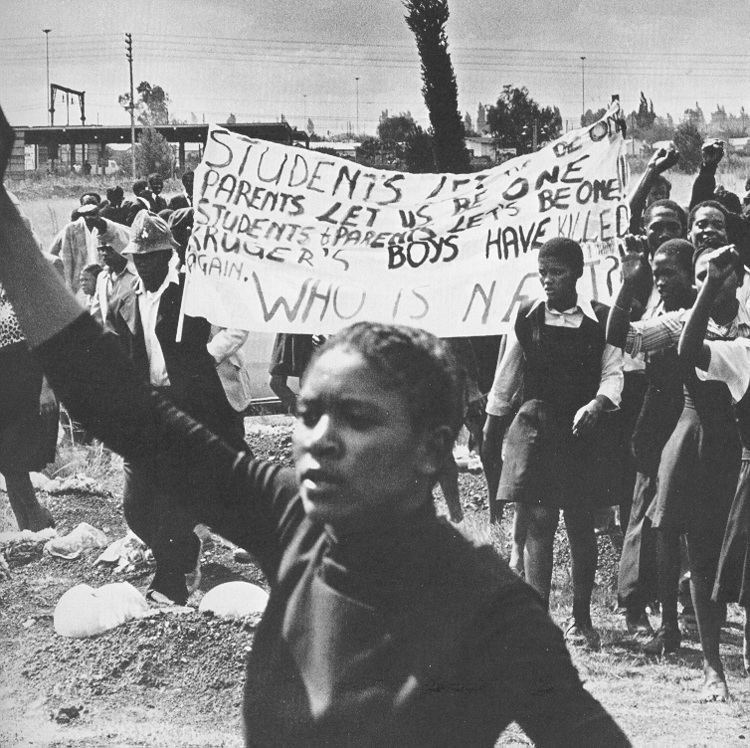Start date March 21, 1960 | ||
 | ||
The sharpeville massacre archbishop tutu discusses events surrounding the massacre
The Sharpeville massacre was an event which occurred on 21 March 1960, at the police station in the South African township of Sharpeville in Transvaal (today part of Gauteng).
Contents
- The sharpeville massacre archbishop tutu discusses events surrounding the massacre
- Survivor of sharpeville massacre recalls events
- Preceding events
- Massacre
- Death and injury toll
- Excuses for firing
- Response
- Aftermath
- International Day for the Elimination of Racial Discrimination
- References

After a day of demonstrations against pass laws, a crowd of about 5,000 to 7,000 black protesters went to the police station. The South African Police opened fire on the crowd, killing 69 people. Sources disagree as to the behaviour of the crowd; some state that the crowd was peaceful, while others state that the crowd had been hurling stones at the police, and that the shooting started when the crowd started advancing toward the fence around the police station.

In present-day South Africa, 21 March is celebrated as a public holiday in honour of human rights and to commemorate the Sharpeville massacre.

Survivor of sharpeville massacre recalls events
Preceding events

South African governments since the eighteenth century had enacted measures to restrict the flow of black South Africans into cities. Pass laws intended to control and direct their movement and employment were updated in the 1950s. Under the country's National Party government, black residents in urban districts were subject to influx control measures. Individuals over sixteen were required to carry passbooks, which contained an identity card, employment and influx authorisation from a labour bureau, name of employer and address, and details of personal history. Leading up to the Sharpeville massacre, the National Party administration under the leadership of Dr. Hendrik Verwoerd used these laws to enforce greater racial segregation and, in 1959-1960, extended them to include women. From the 1960s, the pass laws were the primary instrument used by the state to detain and harass its political opponents.

The African National Congress (ANC) prepared to initiate a campaign of protests against pass laws. These protests were to begin on 31 March 1960, but the rival Pan-Africanist Congress (PAC), led by Robert Sobukwe, decided to pre-empt the ANC by launching its own campaign ten days earlier, on 21 March, because they believed that the ANC could not win the campaign.
Massacre
On March 21, a group of between 5,000 and 10,000 people converged on the local police station in the township of Sharpeville, offering themselves up for arrest for not carrying their passbooks. The Sharpeville police were not completely unprepared for the demonstration, as they had already been forced to drive smaller groups of more militant activists away the previous night.
Many of the civilians present attended to support the protest, but there is evidence that the PAC also used intimidating means to draw the crowd there, including the cutting of telephone lines into Sharpeville, the distribution of pamphlets telling people not to go to work on the day, and coercion of bus drivers and commuters.
By 10:00, a large crowd had gathered, and the atmosphere was initially peaceful and festive. Fewer than 20 police officers were present in the station at the start of the protest. Later the crowd grew to about 20,000, and the mood was described as "ugly", prompting about 130 police reinforcements, supported by four Saracen armoured personnel carriers, to be rushed in. The police were armed with firearms, including Sten submachine guns and Lee–Enfield rifles. There was no evidence that anyone in the gathering was armed with anything other than rocks.
F-86 Sabre jets and Harvard Trainers approached to within a hundred feet of the ground, flying low over the crowd in an attempt to scatter it. The protesters responded by hurling stones (striking three policemen) and menacing the police barricades. Tear gas proved ineffectual, and policemen elected to repel these advances with their batons. At about 13:00 the police tried to arrest a protestor, resulting in a scuffle, and the crowd surged forward. The shooting began shortly thereafter.
Death and injury toll
The official figure is that 69 people were killed, including 8 women and 10 children, and 180 injured, including 31 women and 19 children. Many were shot in the back as they turned to flee, causing some to be paralyzed.
Excuses for firing
Police reports in 1960 claimed that young and inexperienced police officers panicked and opened fire spontaneously, setting off a chain reaction that lasted about forty seconds. It is likely that the police were nervous as two months before the massacre nine constables had been assaulted and killed during a raid at Cato Manor. In addition, few of the policemen present had received public order training. Some of them had been on duty for over twenty-four hours without respite. Lieutenant Colonel Pienaar, the commanding officer of the police reinforcements at Sharpeville, said in his revealing statement that "the native mentality does not allow them to gather for a peaceful demonstration. For them to gather means violence." He also denied giving any order to fire and stated that he would not have done so.
Other evidence given to the Truth and Reconciliation Commission 38 years later in 1998 by two of the victims suggested "a degree of deliberation in the decision to open fire".
Response
The uproar among South Africa's black population was immediate, and the following week saw demonstrations, protest marches, strikes, and riots around the country. On 30 March 1960, the government declared a state of emergency, detaining more than 18,000 people, including prominent anti-apartheid activists who were known as members of the Congress Alliance.
A storm of international protest followed the Sharpeville shootings, including sympathetic demonstrations in many countries and condemnation by the United Nations. On 1 April 1960, the United Nations Security Council passed Resolution 134. Sharpeville marked a turning point in South Africa's history; the country found itself increasingly isolated in the international community. The event also played a role in South Africa's departure from the Commonwealth of Nations in 1961.
The Sharpeville massacre contributed to the banning of the PAC and ANC as illegal organisations. The massacre was one of the catalysts for a shift from passive resistance to armed resistance by these organisations. The foundation of Poqo, the military wing of the PAC, and Umkhonto we Sizwe, the military wing of the ANC, followed shortly afterwards.
Aftermath
Since 1994, 21 March has been commemorated as Human Rights Day in South Africa.
Sharpeville was the site selected by President Nelson Mandela for the signing into law of the Constitution of South Africa on 10 December 1996.
In 1998, the Truth and Reconciliation Commission (TRC) found that the police actions constituted "gross human rights violations in that excessive force was unnecessarily used to stop a gathering of unarmed people."
On 21 March 2002, the 42nd anniversary of the massacre, a memorial was opened by former President Nelson Mandela as part of the Sharpeville Human Rights Precinct.
International Day for the Elimination of Racial Discrimination
UNESCO marks March 21 as the yearly International Day for the Elimination of Racial Discrimination, in memory of the massacre.
